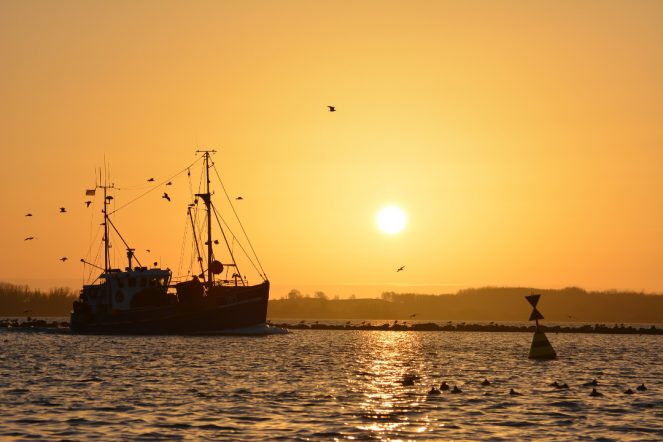
Marine Conservation Society’s Dr Jean-Luc Solandt, Principle Specialist in Marine Protected Areas (MPAs), and MPA Officer Frith Dunkley detail the findings of a new report.
Earlier this year, our Marine unProtected Areas report called for a ban on bottom trawling in offshore MPAs designated to safeguard the seabed. A new report from Seas at Risk and the New Economics Foundation reveals that the benefits of restricting bottom-trawling are not just environmental.
Bottom-trawling report
This new analysis reveals the net benefits, in financial terms, from properly protecting our seas. The study highlights that net benefits start to be seen just a few years after bottom trawling and dredging are banned. After 13 years of a ban, there would be £3.41 returned for every £1 spent. This equates to a cumulative net economic gain of £7.2 billion over a 20-year period.
Money spent on enforcement, and deemed losses from ‘fencing off’ fishing grounds would be quickly outweighed by benefits, both environmental and economic. By banning bottom-trawling in our protected seas we’ll increase biodiversity, support the ocean’s carbon capture and storage capabilities, provide vital habitats for sea life and much more beyond. These environmental benefits are mirrored by economic benefits including the creation of new leisure activities and more and bigger fish for low-impact fishers.
Crucially, a healthy sea and resilient ecosystems would bring many positive community impacts in climate regulation, clean water, carbon capture and protection against extreme natural events.
Marc-Philip Buckhout, Policy Officer at Seas At Risk said: “Marine Protected Areas cannot perform their crucial role to protect marine life if destructive fishing activities such as bottom-trawling is allowed to continue.”
“Banning bottom-trawling from Marine Protected Areas, would allow us to fight biodiversity loss and enable the ocean to mitigate climate change, with net socioeconomic benefits.”
What’s happened so far
MCS have been calling for bans on bottom-trawling in MPAs that protect the seabed for over a decade. So far, government and local regulators have only protected about 5% of the UK’s network of MPAs from bottom trawls and dredges. What’s more, much of this ‘protection’ is in our relatively small inshore sites. Some 98% of our large, offshore MPAs are still trawled or dredged, making them little more than lines on a map.
However, there are promising moves by UK Government which has proposed closures for Dogger Bank Marine Protected Area alongside three other large offshore MPAs.
We have 76 offshore MPAs in UK waters, which means that fisheries management measures and closures are being developed for only 5% of UK offshore MPAs.
This means that of the 76 offshore MPAs in UK waters, only 5% are being considered for protective measures.
The new Fisheries Act allows the UK Government to act more comprehensively to protect our seas, for reasons beyond biodiversity, such as carbon capture, nutrient recycling, protection of essential fish habitat, allowing us to protect ‘whole sites’ from certain fishing methods, whilst allowing less environmentally damaging fishing.
Learn more about what’s happening in the UK’s Marine Protected Areas in the report, Marine unProtected Areas, and see what MCS are asking of the UK Government as part of their Blue Carbon report. Visit Seas at Risk and Marine Conservation Society.
This article was originally published as Report finds even more reasons to ban bottom trawling by Marine Conservation Society.
Tags: Fisheries, MPA, Protected-Areas, Trawling